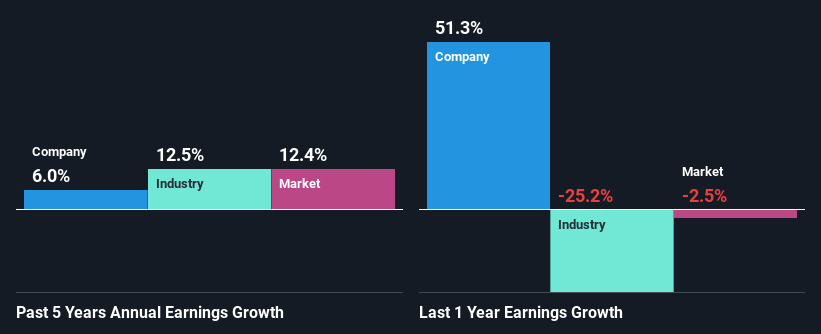Castings P.L.C.’s (LON:CGS) Stock Has Shown Weakness Lately But Financial Prospects Look Decent: Is The Market Wrong?

It is hard to get excited after looking at Castings’ (LON:CGS) recent performance, when its stock has declined 9.4% over the past three months. However, the company’s fundamentals look pretty decent, and long-term financials are usually aligned with future market price movements. In this article, we decided to focus on Castings’ ROE.
ROE or return on equity is a useful tool to assess how effectively a company can generate returns on the investment it received from its shareholders. Put another way, it reveals the company’s success at turning shareholder investments into profits.
See our latest analysis for Castings
How Is ROE Calculated?
The formula for return on equity is:
Return on Equity = Net Profit (from continuing operations) ÷ Shareholders’ Equity
So, based on the above formula, the ROE for Castings is:
12% = UK£15m ÷ UK£127m (Based on the trailing twelve months to September 2023).
The ‘return’ is the amount earned after tax over the last twelve months. That means that for every £1 worth of shareholders’ equity, the company generated £0.12 in profit.
Why Is ROE Important For Earnings Growth?
So far, we’ve learned that ROE is a measure of a company’s profitability. Depending on how much of these profits the company reinvests or “retains”, and how effectively it does so, we are then able to assess a company’s earnings growth potential. Assuming all else is equal, companies that have both a higher return on equity and higher profit retention are usually the ones that have a higher growth rate when compared to companies that don’t have the same features.
Castings’ Earnings Growth And 12% ROE
At first glance, Castings seems to have a decent ROE. On comparing with the average industry ROE of 9.6% the company’s ROE looks pretty remarkable. Probably as a result of this, Castings was able to see a decent growth of 6.0% over the last five years.
As a next step, we compared Castings’ net income growth with the industry and were disappointed to see that the company’s growth is lower than the industry average growth of 13% in the same period.
Earnings growth is an important metric to consider when valuing a stock. It’s important for an investor to know whether the market has priced in the company’s expected earnings growth (or decline). This then helps them determine if the stock is placed for a bright or bleak future. Is Castings fairly valued compared to other companies? These 3 valuation measures might help you decide.
Is Castings Making Efficient Use Of Its Profits?
Castings has a significant three-year median payout ratio of 76%, meaning that it is left with only 24% to reinvest into its business. This implies that the company has been able to achieve decent earnings growth despite returning most of its profits to shareholders.
Moreover, Castings is determined to keep sharing its profits with shareholders which we infer from its long history of paying a dividend for at least ten years. Our latest analyst data shows that the future payout ratio of the company is expected to drop to 50% over the next three years.
Conclusion
On the whole, we do feel that Castings has some positive attributes. The company has grown its earnings moderately as previously discussed. Still, the high ROE could have been even more beneficial to investors had the company been reinvesting more of its profits. As highlighted earlier, the current reinvestment rate appears to be quite low. With that said, the latest industry analyst forecasts reveal that the company’s earnings growth is expected to slow down. To know more about the company’s future earnings growth forecasts take a look at this free report on analyst forecasts for the company to find out more.
Have feedback on this article? Concerned about the content? Get in touch with us directly. Alternatively, email editorial-team (at) simplywallst.com.
This article by Simply Wall St is general in nature. We provide commentary based on historical data and analyst forecasts only using an unbiased methodology and our articles are not intended to be financial advice. It does not constitute a recommendation to buy or sell any stock, and does not take account of your objectives, or your financial situation. We aim to bring you long-term focused analysis driven by fundamental data. Note that our analysis may not factor in the latest price-sensitive company announcements or qualitative material. Simply Wall St has no position in any stocks mentioned.
Source link





